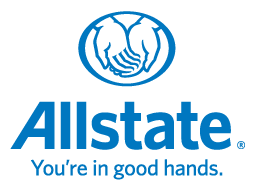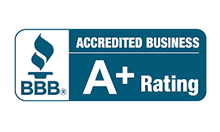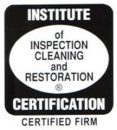Did you know that nearly 98% of basements in the United States will face water damage at some point? Drying your crawl space after a flood is key to preventing expensive repairs. Floods can cause mold, making cleanup harder. It’s important to act fast to keep your home safe and sound.
ServiceMaster of Lake Shore offers expert advice on drying out your crawl space. They use dehumidifiers, fans, and emergency services for flood damage. Quick action and the right maintenance can save the day.
Key Takeaways
- Water damage affects 98% of basements in the U.S.
- Immediate action is crucial for effective crawl space recovery.
- ServiceMaster of Lake Shore offers specialized flood remediation services.
- Comprehensive drying methods include the use of dehumidifiers and fans.
- Proper prevention involves addressing drainage issues and maintaining plumbing systems.
- Mold prevention is key to avoiding additional remediation challenges.
- Professional help is recommended for extensive water damage restoration.
Understanding the Problems of a Flooded Crawl Space
Flooding in a crawl space can cause big problems. One major issue is foundation damage. Water can erode the foundation, which harms the structural integrity of the building. This is dangerous and can cost a lot to fix.
Another big risk is mold growth health risks. Mold loves damp places, and a flooded crawl space is perfect for it. Being around mold for a long time can cause health problems like breathing issues and allergies.
Stagnant water in a crawl space also affects indoor air quality impact. It makes the air humid, leading to musty smells in the home. This can make living there unhealthy and uncomfortable.
Pest infestation prevention is another big worry. Moist areas draw pests like termites, rodents, and insects. Once they get in, they can do more damage and be a health risk.
It’s important to clean, disinfect, and dry the area well. ServiceMaster of Lake Shore says treating a flooded crawl space right can stop these problems. Getting professional help ensures the space is dried out and protected from more damage.
Safety Precautions Before Starting the Drying Process
When dealing with a flooded crawl space, making sure electrical safety is key to avoid accidents. First, turn off the electricity to prevent electrocution. Then, wear protective gear like waterproof boots, gloves, and safety goggles. This helps protect you from the dangers of contaminated water and debris.
Before you start cleaning and drying, make sure to follow these important safety steps. These precautions help lower the risk of accidents and ensure the drying goes smoothly.
How to dry a crawl space after a flood?
It’s vital to act fast when your crawl space gets flooded to stop damage and mold. Using the right water removal methods is key. Submersible pumps are great for quickly getting rid of a lot of water.
After removing most of the water, wet vacuums can pick up the remaining moisture. Sometimes, you’ll need to manually remove water to make sure everything is dry.
ServiceMaster of Lake Shore and Fresh Air Technologies say using commercial dehumidifiers and fans helps dry things out faster. Placing fans in the right spots improves air flow and helps moisture evaporate.
Keeping an eye on humidity levels is important to keep the space dry and avoid problems later. Following the right drying steps and checking up on things ensures the crawl space stays dry. These steps are key to fixing a flooded crawl space and protecting your property from water damage.
Effective Methods to Dry Out the Crawl Space
After a flood, it’s key to dry out the crawl space well to stop mold and damage. Using these methods helps dry it out right and protects it for a long time.
- Professional Dehumidification: Use big dehumidifiers to get humidity under 50%, like ServiceMaster of Lake Shore suggests. This is key to quickly remove too much moisture.
- Air Circulation Improvement: Improve air flow by putting strong fans in the crawl space. Fans help keep air moving, which speeds up drying.
- Structural and Moisture Drying: Dry both the structure and the moisture by using heaters. This method dries out hidden moisture in the structure well.
- Home Drying Strategies: Use different ways to dry your home, like opening vents and sump pumps. These methods help dry the crawl space fast and keep it healthy.
Inspecting and Repairing Damage
After drying out the crawl space, it’s key to assess the damage. Look closely at insulation, wiring, and the structure’s strength. Use leak detection to find hidden moisture sources that could harm your crawl space.
Fixing foundation problems is very important. You might need foundation repair services to keep your home stable. Also, crawl space restoration helps fix damages, making it safe and functional again.
Stopping mold and mildew is a big concern after a flood. Companies like ServiceMaster of Lake Shore stress the need for proper cleaning to get rid of mold spores. Taking steps to prevent mold prevention protects your investment and keeps your home healthy.
It’s wise to get experts to check for any damage you might have missed. This is key to avoid future issues and keep your crawl space in good shape.
Conclusion
After a flood hits a crawl space, it’s key to dry it out well to stop mold and damage. This guide has shown how to fix a flooded crawl space. It covers steps from understanding the issues to inspecting and fixing any damage.
Experts say safety first, then use the best drying methods for full recovery. This ensures your crawl space is safe and dry again.
For long-term protection, regular checks and fixing leaks are key. ServiceMaster of Lake Shore suggests extending downspouts, installing sump pumps, and repairing foundations and pipes. These steps help prevent future floods and make your home stronger.
Getting help from professional flood restoration services is also wise. By taking these steps and using flood prevention methods, homeowners can rest easy. They know their homes are ready for floods and are built to last.


















